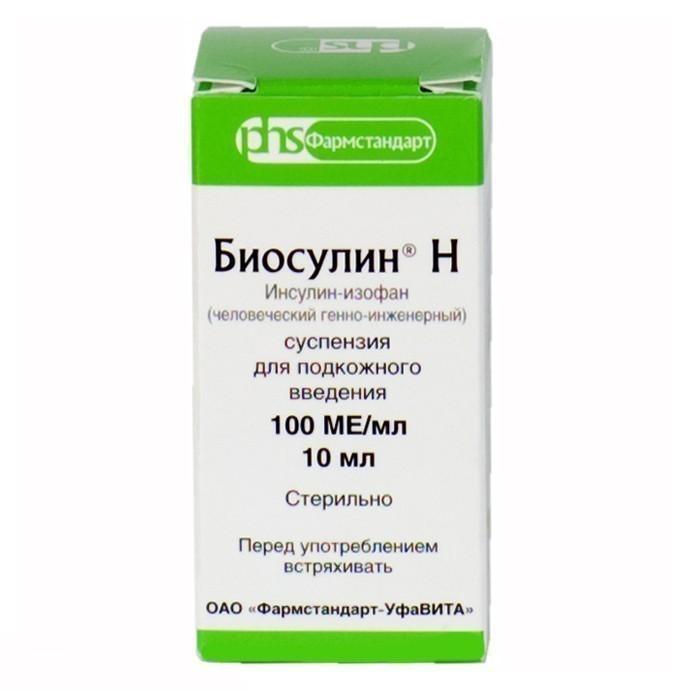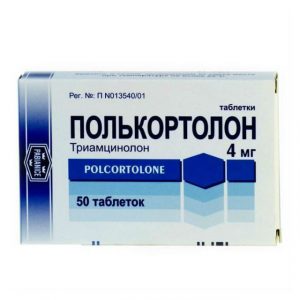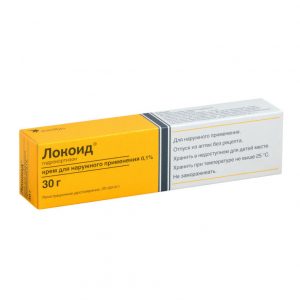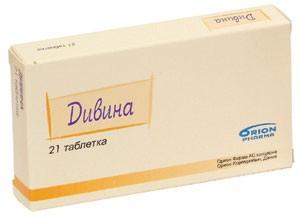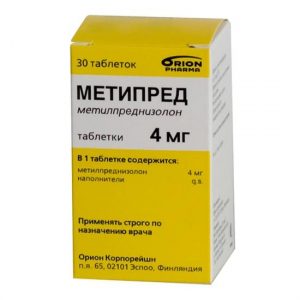Description
Release form
Suspension for subcutaneous administration
Packing
Bottle of 10 ml.
Pharmacological action
Biosulin N is a medium-acting insulin preparation. It is a human insulin obtained using recombinant DNA technology.
Interacts with a specific receptor on the outer cytoplasmic membrane of cells and forms an insulin-receptor complex that stimulates intracellular processes, including synthesis of a number of key enzymes (including hexokinase, pyruvate kinase, glycogen synthetase). The decrease in glucose in the blood is due to an increase in its intracellular transport, increased absorption and assimilation of tissues, stimulation of lipogenesis, glycogenogenesis, a decrease in the rate of glucose production by the liver.
The duration of action of Biosulin N is mainly due to the rate of absorption, which depends on several factors (for example, on the dose, method and place of administration), and therefore the profile of action of insulin is subject to significant fluctuations, both in different and in the same the patient.
Indications
– type 1 diabetes mellitus (insulin-dependent)
– type 2 diabetes mellitus (non-insulin-dependent): stage of resistance to oral hypoglycemic agents, partial resistance to these drugs (during combination therapy), intercurrent diseases.
– emergency conditions in patients with diabetes, accompanied by decompensation of carbohydrate metabolism.
Contraindications
– hypoglycemia
– hypersensitivity to insulin or other components of the drug Biosulin N.
Use during pregnancy and lactation
Data on the use of the drug during pregnancy and during breast-feeding were not provided.
Special instructions
Do not use Biosulin N if the suspension does not turn white and evenly cloudy after shaking.
Against the background of insulin therapy, constant monitoring of blood glucose levels is necessary.
Composition of
1 ml of suspension for subcutaneous administration contains:
active substance: human isofan-insulin 100 PIECES
Dosing and Administration
Dose Biosulin N is determined by the doctor individually, in each case based on the level of glucose in the blood. The drug is intended for sc administration. The average daily dose varies from 0. 5 to 1 IU / kg body weight (depending on the individual characteristics of the patient and the level of glucose in the blood)
Side effects of
Metabolism: hypoglycemic conditions (pallor of the skin, increased sweating, palpitations, tremors, hunger, agitation, paresthesia in the mouth, headache). Severe hypoglycemia can lead to the development of hypoglycemic coma.
Allergic reactions: rarely – skin rash, Quincke’s edema in some cases – anaphylactic shock.
Local reactions: hyperemia, swelling and itching at the injection site with prolonged use – lipodystrophy at the injection site.
Other: edema, transient refractive errors (usually at the beginning of therapy).
Drug Interactions
There are a number of drugs that affect the need for insulin. The hypoglycemic effect of insulin is enhanced by oral hypoglycemic drugs, MAO inhibitors, non-selective beta-blockers, ACE inhibitors, sulfonamides, anabolic steroids, carbonic anhydrase inhibitors, bromocriptine, octreotide, tetracyclines, clofibrate, ketoconazole, mebendazole, pyridoxine, theophylline, cyclophosphamide, ethylene, phenol. The oral hypoglycemic effect of insulin is reduced by oral contraceptives, corticosteroids, thyroid hormones, thiazide diuretics, heparin, tricyclic antidepressants, sympathomimetics, danazole, clonidine, calcium channel blockers, diazoxide, morphine, phenytoin, nicotine. Under the influence of reserpine and salicylates, both a weakening and an increase in the action of the drug are possible.
Overdose
Symptoms: hypoglycemia may develop.
Treatment: The patient can eliminate mild hypoglycemia by taking in sugar or carbohydrate-rich foods (diabetic patients are advised to carry sugar, sweets, cookies or sweet fruit juice on a regular basis). In severe cases, when unconscious – 40% dextrose solution is given in / m, p / k or / / is glucagon. After regaining consciousness, the patient is advised to eat carbohydrate-rich foods to prevent hypoglycemia from developing again.
Storage conditions
The product should be stored out of the reach of children, protected from light at 2 ° to 8 ° C and should not be frozen.
Active ingredient
Insulin-isophan human genetic engineering
Terms leave through pharmacies
In retseptu
lekarstvennaja form
suspensions for
Prescribing
For adults as prescribed by a doctor, Pregnant as prescribed by a doctor, Children over 3 years old, As prescribed by a doctor splro29 pfroff29 pfrodfr29 For adults as prescribed by a doctor, Pregnant as prescribed by a doctor, Nursing mothers as prescribed by a doctor, Children as prescribed by a doctor
Indications
Indications
Type 2 diabetes, Type 1 diabetes
Pharmstandard-Ufafaita, Russia
